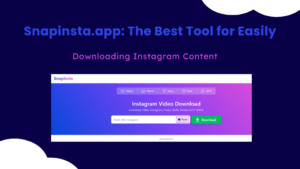
In the vast expanse of search engine result pages (SERPs), there exists a little-known gem called “People Also Ask” (PAA). This ingenious feature is designed to enhance the user experience by providing dynamic and interactive answers right on the search results page.
Have you ever noticed those neat little suggestions that appear when you search for something? Well, those are People Also Ask questions waiting to be clicked upon. With just a simple click, these questions magically expand to reveal well-structured answers, delighting users with instant information without the need for additional clicks. It’s like having a curious genie at your beck and call.
Table of Contents
Understanding the Functionality of PAA
Mechanics of People Also Ask
The magic behind People Also Asks lies in its ability to fetch questions and answers from authoritative sources. As a cunning algorithm pulls these queries and solutions together, it also works its magic to determine their relevance and order. It’s like watching a master conductor assemble an orchestra, except this orchestra answers your burning questions with precision and accuracy.
PAA’s Impact on User Experience
People Also Ask not only makes the user journey more engaging but also provides a swift shortcut to sought-after information. Imagine having access to answers right within the search results, saving you precious time and sparing you the headache of visiting multiple websites. PAA encourages interaction and leaves users feeling empowered as if they’ve just uncovered secret knowledge.
The Connection Between PAA and User Intent
PAA aligns seamlessly with the elusive concept known as user intent. By analyzing the various types of questions in PAA and their relevance to search queries, users are provided with highly satisfying and tailored results. It’s like taking a psychic detour into the minds of users, knowing precisely what they want, and serving it to them on a silver platter.
The SEO Benefits of PAA
PAA as a Source of Keyword Insights
Within the depths of PAA lies a treasure trove of keyword insights waiting to be unearthed. By mining the invaluable data provided by People Also Ask, one can identify popular search queries and gain a deep understanding of what makes users click. The savvy marketer can then harness this information to optimize their content and ride the waves of trends with aplomb.
SERP Real Expansion with PAA
Ah, the age-old struggle for recognition on the crowded canvas of search engine result pages. Fear not, PAA comes to the rescue by providing additional visibility for your precious content. When your website earns a coveted spot within People Also Ask listings, you not only stand out from the crowd but also increase the chances of your content being seen by eager eyes. It’s like having your own slice of prime real estate in the digital world.
Enhanced Organic Click-through Rates (CTR) with PAA
If clicks were currency, then featured snippets within People Also Ask would be gold bars. By optimizing your content to be featured in these snippets, you can skyrocket your CTR and bask in the glory of increased organic traffic. Strategies abound for capturing the attention of users and enticing them to click on your website, leading them down the rabbit hole of valuable information you have to offer.
Boosting Search Ranking with PAA
The mystical powers of People Also Ask extend beyond user engagement and click-through rates. It turns out that PAA also holds sway over the all-important search engine ranking factors. By leveraging PAA to its fullest potential, you can bolster your website’s ranking in the hallowed halls of search engine results. It’s like having your own secret weapon in the battle for SEO supremacy.
Exploiting PAA for Content Strategy
Crafting Content Aligned with PAA
To conquer PAA, one must understand its inner workings. By generating comprehensive answers to People Also Ask questions, you position yourself as a knowledgeable authority in your field. The art of incorporating PAA content seamlessly into your blog posts, articles, and FAQ sections will make your website a go-to resource for eager seekers of wisdom. It’s like being the sage whose every word holds weight and respect.
Using PAA for Competitive Research
In the cutthroat world of business, keeping an eye on your competitors is essential. With PAA as your trusty spy, you can analyze your rivals’ strategies and tactics. By delving into the PAA questions related to your competitors, you gain valuable insights and inspiration for crafting your own winning content. It’s like playing a game of chess, where every move is informed by the careful observation of your opponents.
Leveraging PAA for Featured Snippets
Featured snippets, those glorious nuggets of information that entice users to click, are the crowning jewels in the People Also Ask realm. By optimizing your content specifically for these snippets, you increase your chances of earning a coveted spot within PAA. Strategies abound for crafting content that is both concise and informative, ensuring that you rise above the competition and claim your rightful place in the limelight.
Best Practices for PAA Integration in SEO
Conducting PAA-specific Keyword Research
To conquer PAA, one must wield the right tools and techniques. Various resources are available to help uncover those elusive PAA-related keywords. By identifying high-potential opportunities within the vast realm of PAA, you can turn the tides in your favor and outshine your competition. It’s like owning a map that leads you straight to buried treasure.
Structuring Content for PAA Success
When it comes to PAA, formatting is key. By employing various formatting techniques, you can improve the visibility of your content within PAA. Maximizing your chances of being pulled into the ever-expanding universe of PAA is essential in ensuring your website stands out and attracts the attention it rightly deserves. It’s like donning an irresistible outfit, tailored to catch the eyes of passersby.
Monitoring and Tracking PAA Performance
The world of SEO is a dynamic and ever-changing landscape, and PAA is no exception. Keep tabs on PAA-driven traffic and engagement by utilizing analytics tools specifically designed to measure its impact. By evaluating how PAA fits into your overall SEO performance, you can adapt and optimize your strategies for maximum effect. It’s like having a trusted advisor whispering sweet nothings into your ear, guiding you to SEO victory.
Incorporating PAA into Your SEO Strategy
Now that you understand the benefits of PAA, it’s time to incorporate it into your SEO strategy. Here are some tips to help you get started:
Analyze the Questions
The first step is to analyze the questions that appear in the PAA section. Look for patterns and identify keywords and phrases that are relevant to your audience. This can help you create content that addresses their needs and attracts more traffic to your website.
Include the Questions in Your Content
Once you’ve identified the questions that are relevant to your audience, include them in your content. Answer the questions in a clear and concise manner, and provide users with additional information that they may find helpful.
Optimize Your Content
To maximize the benefits of PAA, it’s important to optimize your content for SEO. Use relevant keywords and phrases, include internal and external links, and make sure your content is easy to read and understand.
Monitor Your Results
Finally, it’s important to monitor your results and track the impact of PAA on your SEO. Use tools like Google Analytics to track your website’s traffic and engagement, and adjust your strategy as needed.
Wrap-up
In the realm of SEO, “People Also Ask” (PAA) is a hidden gem that holds immense potential. By understanding its mechanics and leveraging its features, you can unleash a torrent of SEO benefits. From keyword insights and expanded visibility to enhanced click-through rates and improved search rankings, PAA is a formidable ally in your quest for online success. Embrace the power of PAA, adapt your SEO practices, and ascend to new heights of digital glory.
FAQ’s
What is the purpose of the “People Also Ask” (PAA) feature?
PAA enhances the user experience by providing quick answers and easy access to valuable information directly on the search results page.
How does PAA influence search engine rankings?
PAA improves user engagement, click-through rates, and content optimization for featured snippets, leading to better search engine rankings.
Can PAA snippets be optimized to improve click-through rates (CTR)?
Yes, crafting concise and informative content tailored to user needs can enhance your chances of being featured in PAA snippets, boosting CTR.
What techniques help structure content for PAA success?
Use headers, bullet points, and sub-bullet points to format content for easy navigation and visual appeal, increasing the likelihood of being featured in PAA.
Are there risks in relying heavily on PAA for SEO optimization?
While PAA is powerful, over-reliance could make you susceptible to algorithm changes. Diversifying SEO strategies ensures adaptability.
Can PAA questions provide insights into user intent?
Absolutely, analyzing PAA questions helps understand what users are seeking, aiding in tailoring content to their needs.
How can I find relevant PAA questions for my content?
Tools like SEMrush and AnswerThePublic can help you discover pertinent PAA questions related to your topic.
Does optimizing for PAA benefit voice search as well?
Yes, PAA optimization aligns with how users phrase voice search queries, making your content voice-search-friendly.
Can I use PAA to target long-tail keywords effectively?
Certainly, PAA often contains long-tail keywords that reflect specific user queries, aiding in precise keyword targeting.
Is PAA an indicator of user behavior and preferences?
Yes, PAA questions reflect what users are curious about, offering insights into trends and preferences within your niche.






